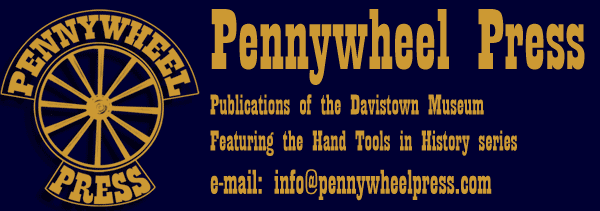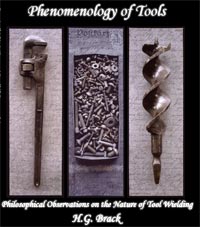
 Phenomenology of Tools
Phenomenology of Tools
H.G. Brack
2nd edition, 2010
The Phenomenology of Tools was written in the 1970s and first published in 1982. This second edition includes added photographs illustrating the poem, a new preface, and several appendices. In 1999, H. G. Brack became the curator of the Davistown Museum. His "Curator's Riff" from the museum's 2005 show catalog is reproduced as an appendix. It provides a less abstract synopsis of the phenomenology of tools, especially as experienced and presented by New England artists, toolmakers, and others in the permanent collection of the Davistown Museum. Using a poem by Philip Booth as a context in which to explore the show's theme of the marriage of tools, art, and history, both the "Curator's Riff" and the exhibition explicate a key element of the phenomenology of tools that is only briefly referenced in the first edition text, i.e. the joys of the convivial use of tools. From the simple joys of gardening to the subtle satisfactions of mechanics, machinists, artisans, and artists, an enduring lesson of forty years as a "mooncusser" (tool salvaging) is how much fun we have with our tools. Decades of observing the enjoyment that both tool customers and museum visitors express upon buying, owning, and using or viewing tools stand in contrast to the ominous legacy of our technological achievements.
Softcover, 8" x 10"
$15.00
Available on Amazon.com
Amazon.com description
The Phenomenology of Tools was written in the 1970s and first published in 1982. This second edition includes added photographs illustrating the poem, a new preface, and several appendices. In 1999, H. G. Brack became the curator of the Davistown Museum. His "Curator's Riff" from the museum's 2005 show catalog is reproduced as an appendix. It provides a less abstract synopsis of the phenomenology of tools, especially as experienced and presented by New England artists, toolmakers, and others in the permanent collection of the Davistown Museum. Using a poem by Philip Booth as a context in which to explore the show's theme of the marriage of tools, art, and history, both the "Curator's Riff" and the exhibition explicate a key element of the phenomenology of tools that is only briefly referenced in the first edition text, i.e. the joys of the convivial use of tools. From the simple joys of gardening to the subtle satisfactions of mechanics, machinists, artisans, and artists, an enduring lesson of forty years as a "mooncusser" (tool salvaging) is how much fun we have with our tools. Decades of observing the enjoyment that both tool customers and museum visitors express upon buying, owning, and using or viewing tools stand in contrast to the ominous legacy of our technological achievements.